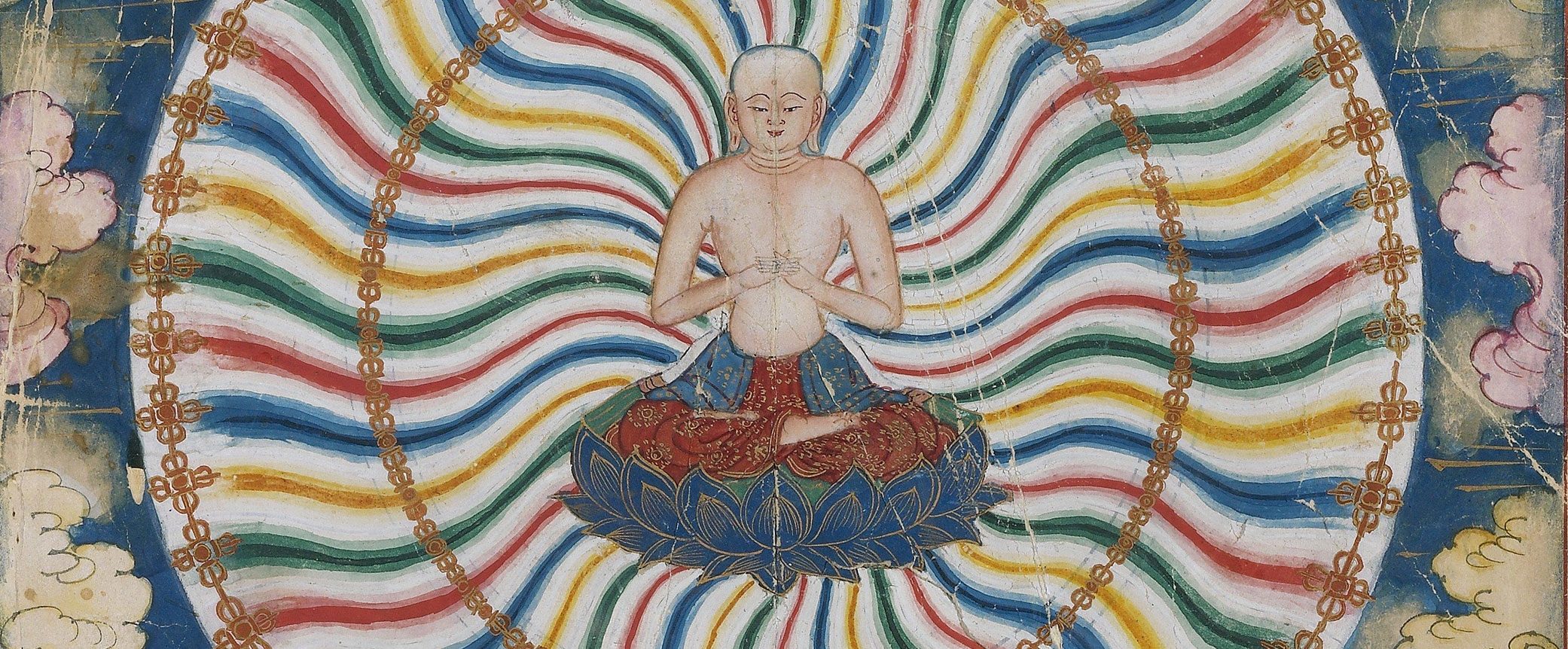
Asian Studies Circle
Exhibition Tour & Reception
Wednesday, December 10, 2014
6:00 PM–8:30 PM
ALL-KNOWING BUDDHA EXHIBITION TOUR AND RECEPTION
Please join the Asian Studies Circle Wednesday, December 10, for the opportunity to tour the exhibition, The All Knowing Buddha: A Secret Guide, with Rubin Museum curators, Karl Debreczeny and Elena Pakhoutova, followed by a reception with light fare in the Rubin Museum’s Cafe Serai. All attendees will be given a complimentary exhibition catalogue. Gallery Tour and reception are complimentary.
Event Schedule
Exhibition Tour: 6:00 PM Meets in Lobby.
Begins promptly at 6:00 PM. Meets in Lobby.
Reception in Cafe Serai: 7:00 – 8:30 PM
For more information, e-mail universityprograms@rubinmuseum.org or call 212.620.5000 ext. 337.
About the Exhibition
The All-Knowing Buddha: A Secret Guide, October 3, 2014 – April 13, 2015, focuses on an exceptional set of paintings from 18th-entury China that illustrate the meditation practice of Sarvavid Vairochana, a primordial Buddha central to the Tibetan Buddhist tradition. The album is one of only two of its kind in existence to depict visually a secret esoteric practice. The presentation at the Rubin is the first time that these important paintings are exhibited in the United States.The 54 richly detailed paintings provide step-by-step guidance to visualization of the Buddha Sarvavid Vairochana and offer unique insight into the meditation and rituals of Tibetan Buddhism. These practices are normally not meant to be depicted and are usually restricted to oral transmission by a teacher to his initiated disciple. The album is displayed at the Rubin with sculptures and paintings that provide an artistic, religious, and historical context for Buddhist practices related to Vairochana. On loan to the Rubin from the Museum aan de Stroom in Antwerp, Belgium, the album was first brought to the West in 1923 by a Christian missionary who acquired it from a Buddhist monastery in Jehol, Inner Mongolia. It is believed to have been commissioned by a Mongolian patron during the Qing Dynasty (1644-1911), whose rulers sponsored extensive artistic production and supported Tibetan Buddhist monasteries. Drawing together Tibetan Buddhist content with the aesthetic traditions of Qing-era Chinese art in Inner Mongolia, the album exemplifies the rich patterns of cross-cultural exchange that characterized the period and region.
Gallery tour and reception are free. Reservations Required.

